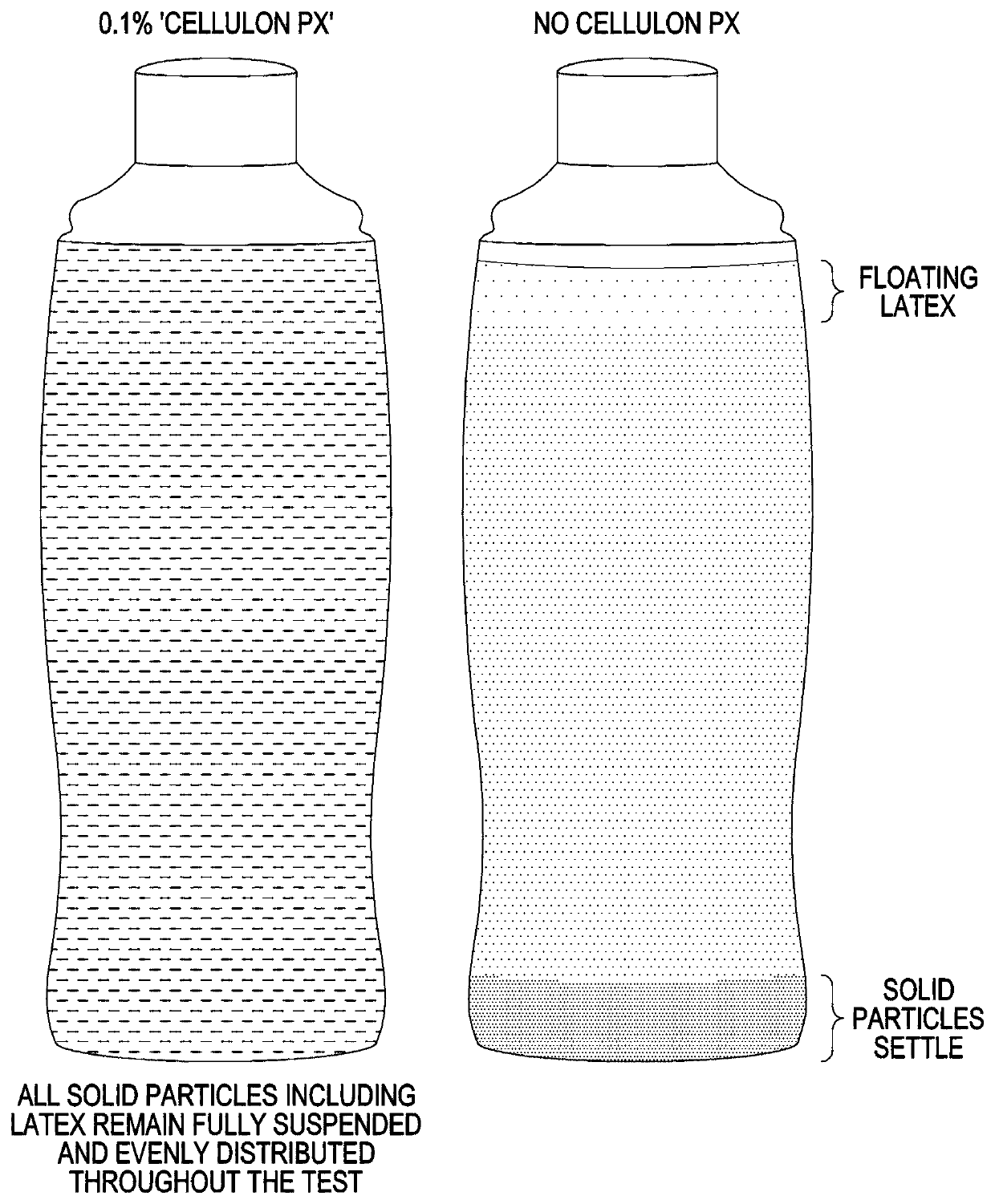Sealant composition
a technology of composition and sealant, applied in the field of sealant composition, to achieve the effect of effective seal, high density, and superior behavior
- Summary
- Abstract
- Description
- Claims
- Application Information
AI Technical Summary
Benefits of technology
Problems solved by technology
Method used
Image
Examples
example 1
[0161]In this preferred embodiment, the components of this form of tire sealant composition are present substantially in the following weight amounts (the weights being expressed as a percentage of the weight of the final formulation):
[0162]
Glycerine20.0Propylene Glycol25.0Cellulon PX or KELCO-VIS DG0.02Water44.48Concentrate Pre-Mix5.0Natural Rubber Latex (60% emulsion)3.5Rosin Solution Pre-Mix2.0
[0163]The components in the “concentrate” pre-mix are present substantially in the following weight amounts (the weights being expressed as a percentage of the weight of the final formulation):
[0164]
Glycerine1.0Propylene Glycol1.0Water0.5Sodium Bicarbonate0.21Non-Ionic Surfactant (AXIEOGREEN LA8)0.65Ammonia 20%0.3Sodium silicate 40%0.84Aerosil R9720.07Tapioca0.06High Density Polyethylene0.12Powder ≤250 μmBentonite0.06Polybutane0.19
[0165]The components in this form of rosin solution pre-mix are present substantially in the following weight amounts (the weights being expressed as a percentage...
example 2
Composition
[0173]
PART A%WATER40GLYCERINE6CELLULON PX0.1
The following ingredients (Part B) are added in descending order while stirring
[0174]
PART BWATER18SODIUM SILICATE 40%0.5PROPYLENE GLYCOL25& / OR GLYCERINELATEX EMULSION3SEALANT CONCENTRATE6.7(C)PRESERVATIVE0.7
Part B is added to part A while stirring to form the finished product.
[0175]
SEALANT CONCENTRATE (C)WATER1.24SODIUM BICARBONATE0.1SODIUM SILICATE0.540% / Fumed silicaPROPYLENE GLYCOL1.0TAPIOCA0.5POLYACRYLATE PRE-MIX0.2ROSIN PRE-MIX2.3POLYETHYLENE POWDER0.06≤250 μmVINYL ACETATE CO-0.8POLYMER
PUM
| Property | Measurement | Unit |
|---|---|---|
| particle sizes | aaaaa | aaaaa |
| particle sizes | aaaaa | aaaaa |
| particle sizes | aaaaa | aaaaa |
Abstract
Description
Claims
Application Information
 Login to View More
Login to View More - R&D
- Intellectual Property
- Life Sciences
- Materials
- Tech Scout
- Unparalleled Data Quality
- Higher Quality Content
- 60% Fewer Hallucinations
Browse by: Latest US Patents, China's latest patents, Technical Efficacy Thesaurus, Application Domain, Technology Topic, Popular Technical Reports.
© 2025 PatSnap. All rights reserved.Legal|Privacy policy|Modern Slavery Act Transparency Statement|Sitemap|About US| Contact US: help@patsnap.com

